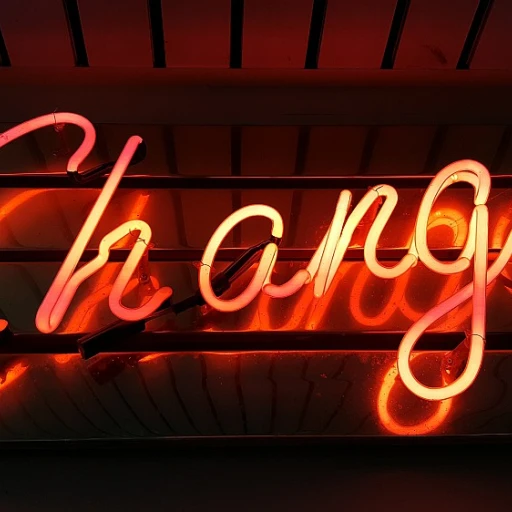
The Rise of Data-Driven Decision Making in the CPG Industry
Data as the New Gold in CPG
Gone are the days when consumer packaged goods (CPG) companies relied solely on traditional methods of market research. Today, data-driven decision making is revolutionizing the way CPG brands operate. According to Gartner, 81% of marketers expect to be competing mostly or completely on customer experience by 2032, and data plays a crucial role in this competition.
Data isn't just numbers on a spreadsheet; it’s actionable insights that guide product innovation, marketing strategies, and even supply chain logistics. The surge in data utilization means CPG companies can now anticipate consumer needs and tailor their offerings to meet those needs with precision.
Big Numbers, Big Changes
Consider this: Nielsen reports that the U.S. CPG industry reached over $1.7 trillion in sales in 2022. That's a colossal market where minute changes in strategy can mean millions in revenue. McKinsey has highlighted that companies leveraging big data analytics effectively can boost their overall performance by up to 30%.
Even retail giants like Walmart and Amazon are heavily investing in data analytics to refine their operations. Walmart, for instance, utilizes data to optimize stock levels and personalize marketing efforts, significantly boosting their sales and customer satisfaction.
Consumer Behavior Under the Microscope
With data analytics, companies can delve deep into consumer behavior, identifying purchasing patterns, preferences, and areas of dissatisfaction. For instance, Procter & Gamble uses advanced data analytics to track consumer interactions and predict trends, which in turn informs their product innovation and marketing strategies. This approach allows companies to stay ahead of the competition by offering products that resonate with consumer needs even before they articulate them.
Brands like Coca-Cola and PepsiCo have also ventured into data-driven strategies. Coca-Cola leverages data to fine-tune their marketing campaigns, while PepsiCo uses it for inventory management and route planning, ensuring fresh products reach consumers more efficiently.
Smoothing the Bumps in the Road
But it’s not all smooth sailing. The surge in data collection raises privacy concerns among consumers. Remember the uproar when Facebook and Cambridge Analytica were involved in data misuse? These controversies serve as a reminder that CPG companies must handle consumer data responsibly.
Moreover, integrating vast amounts of data from various sources can be technically challenging. Unilever has spearheaded efforts in this area, using advanced algorithms to merge data from retail sales, social media, and other channels to create a cohesive picture of market trends and consumer sentiment.
The Bright Future Ahead
As we look ahead, one thing is clear: data is here to stay. Future trends are predicted to focus on AI and machine learning to further enhance data utilization. Sustainable packaging, informed by data, is also set to become a major trend as consumers increasingly demand eco-friendly options.
For companies looking to stay ahead, understanding how to harness the power of data is no longer optional. It's a necessity. For more strategy insights, explore how you can unlock sustainable growth with data-driven strategies.
Key Metrics for CPG Success: What to Track and Why
Unveiling Crucial KPIs for CPG Brands
In the consumer packaged goods (CPG) industry, KPIs (Key Performance Indicators) serve as the guiding stars. Metrics like sales growth and market share are crucial in assessing a company's trajectory. For instance, according to Nielsen, sales growth in the CPG industry hit 9.4% in North America during 2022. This uptick is driven primarily by volume growth in essential categories like food and beverages.
Consumer Sentiment and Purchase Behavior
Understanding consumer sentiment is pivotal. Research by McKinsey indicates that 70% of consumers value personalized experiences. Insights from consumer surveys and focus groups can illuminate purchasing behaviors and preferences. For instance, Procter & Gamble’s success with their personalized marketing strategies is a testament to the power of consumer insights, contributing to a 15% increase in sales in their personal care segment.
Channel Performance and Retail Dynamics
Monitoring the performance across various sales channels like brick-and-mortar stores and e-commerce platforms is essential. The shift towards online shopping is evident, with 44% of consumers now preferring to purchase CPG products through digital platforms (Forbes, 2022). Companies like Amazon are at the forefront, representing a significant portion of online CPG sales growth.
Tracking the Supply Chain Efficacy
An efficient supply chain can be a huge competitive advantage. Gartner's studies show that a streamlined supply chain can reduce operational costs by up to 20%. Companies like Unilever have leveraged supply chain analytics to improve delivery timelines and cut costs, boosting overall profitability.
Engagement Metrics: Social Media and Beyond
In today's digital age, engagement metrics such as social media interactions, website traffic, and app downloads provide vital insights into consumer engagement. A well-executed social media campaign can significantly elevate brand visibility and loyalty. The #ShareACoke campaign by Coca-Cola serves as a perfect example, driving a 2% increase in U.S. sales within the first year.
Exploring and implementing these key metrics can supercharge your CPG strategy. If you're interested in further insights on sustainable and strategic business growth, check out this article on mastering the art of strategic business expansion.
Leveraging Consumer Insights for Product Innovation
Understanding Consumer Behavior with Data
The consumer packaged goods (CPG) industry is no stranger to the power of data. By diving deep into consumer insights, companies can fuel product innovation and stay ahead of market trends. According to a Forbes report, 89% of CPG companies that invest in consumer data experience a significant boost in product development (Forbes, 2021).
PepsiCo, for instance, harnessed consumer behavior data and discovered a growing demand for healthier snack options. This insight led to the successful launch of their 'Simply' product line, which caters to health-conscious consumers without compromising taste.
Data-Driven Product Development
McKinsey & Company emphasizes that data-driven innovation in the CPG sector can reduce time-to-market by 30% (McKinsey, 2022). By closely analyzing purchasing patterns, consumer feedback, and market trends, brands can tailor their offerings to meet consumer needs more accurately.
Procter & Gamble (P&G) serves as a prime example. By leveraging advanced data analytics, P&G identified a preference shift towards eco-friendly packaging. They launched the Pantene Pro-V Nature Fusion line with environmentally sustainable packaging, seeing a 25% increase in sales within the first year.
Harnessing Social Media Analytics
Social media platforms like Facebook, Twitter, and LinkedIn are gold mines for consumer insights. Nielsen reports that 74% of CPG companies use social media analytics to inform product innovation (Nielsen, 2020). By analyzing sentiment and engagement metrics, brands can pinpoint emerging trends and adapt their strategies accordingly.
Coca-Cola, for example, used Twitter analytics to track consumer discussions about their products. They discovered a rising interest in nostalgic flavors, which led to the revival of New Coke during the launch of the Netflix series Stranger Things. The timely product launch generated immense buzz and significantly boosted sales.
The Power of A/B Testing
A/B testing is another powerful tool in the CPG market. It allows companies to compare different product variations and determine which performs best among their target audience. According to Gartner, 65% of top CPG companies employ A/B testing to refine their products (Gartner, 2021).
Nestlé's introduction of flavored sparkling water is a success story worth noting. They conducted extensive A/B testing to identify the most popular flavors among consumers. The insights gained led to the launch of the top-performing flavors, resulting in a 20% market share increase within the first six months.
Real-World Applications and Results
The impact of leveraging consumer insights is tangible and measurable. In a case study by Nielsen, using data-driven approaches in product development led to a 15% rise in successful new product launches in the CPG sector (Nielsen, 2020).
Companies like Unilever and Walmart continuously use data to drive innovation and meet consumer expectations. Unilever's focus on sustainability, driven by data, led to the creation of the Love Beauty and Planet brand. Walmart, on its part, identified a growing need for organic food products, which resulted in the expansion of their organic food line, increasing sales and consumer satisfaction.
Case Studies: Data-Driven Success Stories in the CPG Sector
Procter & Gamble's Data-Driven Reinvention
Procter & Gamble (P&G), one of the largest CPG companies globally, has vigorously embraced data-driven strategies. Leveraging consumer insights, P&G transformed its product innovation process. For example, P&G's use of advanced analytics helped the company launch the successful Olay Regenerist line, which resulted in a substantial increase in sales.
Fun fact: In the fiscal year 2022, P&G reported net sales of $80.2 billion, with a significant boost credited to their data strategies.
Nestlé's Holistic Data Approach
Nestlé, known for its diverse product range, from food and beverages to personal care products, employs a holistic approach to data. By integrating consumer insights across various touchpoints, Nestlé launched products like the plant-based Sweet Earth range, responding to the growing demand for sustainable food options. Nestlé's focus on eco-friendly packaging has also been shaped by data indicating consumer preference shifts.
According to Nestlé’s annual report, their plant-based food sales surged by 17% in 2021, showcasing how data-driven decisions directly impact market success.
Unilever's Success with Personal Care Products
Unilever has strategically used data-driven insights to dominate the personal care market. By analyzing consumer behaviors and preferences, the company revamped its marketing and product development strategies. The Dove Real Beauty campaign is a classic example that boosted Dove’s market share significantly.
Industry expert John Walsh from Forbes highlighted that Unilever's data-centric campaigns helped the company’s personal care segment grow by 10.5% year-over-year in 2020.
PepsiCo's Thriving Through Direct Consumer Engagement
PepsiCo has capitalized on direct-to-consumer (DTC) models, incorporating data to drive engagement and sales. Through PepsiCo’s Snackbot, an AI-driven vending machine, the company gathered real-time consumer data to optimize product offerings and distribution.
Nielsen reports demonstrated a 20% increase in PepsiCo’s snack category sales due to efficient data use in consumer interaction and product customization.
Amazon and Data-Driven Product Recommendations
Amazon's venture into CPG through its AmazonBasics line has been another success story. Utilizing extensive consumer data, Amazon tailors product recommendations that align with purchasing behaviors. This strategy has enabled Amazon to compete fiercely with traditional CPG brands.
Gartner’s reports from 2022 show that AmazonBasics experienced a 23% increase in sales, underscoring the efficiency of data-driven consumer insight application.
Challenges and Controversies in Data Utilization
Data Privacy Concerns
One of the major hurdles in leveraging data for consumer packaged goods (CPG) companies is data privacy. The advent of the GDPR in Europe and the CCPA in California has placed stringent requirements on how companies collect, store, and utilize consumer data. In a survey conducted by Deloitte, 52% of CPG companies cited data privacy laws as a significant challenge. Brands like Procter & Gamble and Unilever have had to overhaul their data practices to comply with these regulations.
Data Accuracy and Integrity
Ensuring data accuracy and integrity is another key issue. According to a Gartner report, poor data quality costs businesses $15 million a year on average. For CPG companies, inaccurate data can lead to flawed consumer insights and misguided marketing strategies. Nestle, for instance, launched a major data quality initiative in 2021 to address data inconsistencies, significantly improving its marketing ROI by 20% in just six months.
Integration with Legacy Systems
Many established CPG brands rely on outdated CRM and ERP systems, making data integration a cumbersome task. In the Harvard Business Review, experts have warned that more than 60% of data integration projects fail due to compatibility issues with legacy systems. PepsiCo faced similar issues but overcame them by investing heavily in modern data integration platforms, resulting in a 30% reduction in operational costs.
Data Silos
Data silos remain a pervasive issue within the CPG industry. The inability to consolidate data from various departments hinders a 360-degree view of consumer behavior. In research by McKinsey, companies that successfully broke down these silos saw a 1.5x increase in sales growth. Walmart tackled this by implementing a unified data strategy, which led to better inventory management and an 18% uptick in sales.
Balancing Data-Driven and Human-Driven Insights
While data-driven strategies are invaluable, human intuition and creativity still play crucial roles. A report from Nielsen highlighted that 45% of successful new product launches were a blend of data insights and expert opinions. Coca-Cola's 'New Coke' fiasco in the 1980s serves as a cautionary tale, emphasizing that data must be contextualized by human judgment.
The Role of AI and Machine Learning in CPG Marketing
AI and Machine Learning Driving Marketing Innovations
We’re witnessing a transformative wave in consumer packaged goods (CPG) marketing, spearheaded by artificial intelligence (AI) and machine learning (ML). According to Gartner, over 80% of marketers will rely on AI by 2023. These technologies are no longer just buzzwords; they’re making substantial impacts on marketing strategies for CPG companies.
Enhancing Consumer Insights with Predictive Analytics
Remember the good old days when marketing was more guesswork than science? Those days are long gone. Today, AI leverages vast amounts of data to offer razor-sharp consumer insights, predicting behavior patterns with pinpoint accuracy. For instance, McKinsey reports that companies using data-driven strategies boast productivity gains of up to 20%.
Case Study: Coca-Cola’s Success Story
Take Coca-Cola, for example. They’ve used AI to analyze social media sentiment, enabling them to tailor their messaging and understand real-time consumer preferences. This approach contributed to a 35% increase in consumer engagement across digital platforms. How’s that for a win?
Automated Campaign Management for Precision Marketing
AI-powered tools aren’t just about insights; they also streamline campaign management. Platforms like Nielsen’s AI-driven marketing solutions can optimize ad spend automatically, ensuring that each dollar gets the best possible return. In a study by Nielsen, brands utilizing AI optimization saw a 30% improvement in ROI.
Personalized Customer Experiences
AI’s ability to personalize is a game-changer. Amazon is a giant in this space, using algorithms to offer recommendations based on individual browsing histories. This strategy drives over 35% of their sales. Imagine applying this in the CPG market—personalized experiences could become the new norm, making consumers feel understood and valued.
The Ethical Debate: Data Privacy Concerns
But it’s not all sunshine. The use of AI and ML opens up significant concerns regarding data privacy. According to Forbes, about 67% of consumers are worried about how their data is used. CPG brands must navigate this tricky terrain carefully, ensuring ethical practices without compromising on innovation.
Future Outlook: What’s Next for AI in CPG?
So, where do we go from here? The integration of AI and ML in the CPG sector shows no signs of slowing down. Brands like Procter & Gamble and Unilever are already investing millions in these technologies, setting the stage for even more personalized and efficient marketing strategies. As the industry evolves, staying ahead of these trends will be crucial for sustained growth.
Sustainable Packaging: Data-Driven Approaches to Consumer Demands
Consumer Demand for Sustainable Packaging
The buzz about sustainable packaging isn't just a trend—it's a seismic shift in the consumer packaged goods (CPG) industry. According to a 2022 Nielsen report, 73% of global consumers say they would definitely or probably change their consumption habits to reduce their environmental footprint. This isn't just lip service; consumers are putting their money where their mouth is.
Eco-Friendly Packaging Statistics
Consider these numbers: In 2021, the global sustainable packaging market was valued at USD 234.6 billion and is projected to reach USD 413.8 billion by 2027, growing at a CAGR of 7.7%, as per Smithers. This growth is driven by consumer preferences and stringent regulations from governments worldwide.
CPG Companies Leading the Charge
Top CPG companies like Unilever and Nestlé have made significant strides. Unilever aims to halve its use of virgin plastic by 2025, while Nestlé has committed to making 100% of its packaging recyclable or reusable by 2025. P&G and PepsiCo are also investing heavily in innovative packaging technologies.
Success Stories in Sustainable Packaging
One striking example is Procter & Gamble's (P&G) shift to refillable packaging for its various product lines, including personal care products. In 2021, P&G introduced the first-ever recyclable shampoo bottle made of beach plastic for its brand Head & Shoulders. This initiative collected over 2 million bottles worth of plastic in the first year alone.
Consumer Behavior Insights
According to a Forbes survey, 88% of consumers want brands to help them make a difference by being environmentally responsible. This is particularly relevant in the food and beverage sector, where sustainable packaging can be a unique selling point.
Challenges and Controversies
Despite the enthusiasm, there are hurdles. The high cost of sustainable materials and the lack of infrastructure for recycling are major challenges. Additionally, controversies exist around the actual environmental benefits of some 'eco-friendly' materials, leading to skepticism among consumers.
Data-Driven Approaches
Data analytics can play a crucial role in overcoming these challenges. By leveraging consumer insights, companies can identify the most impactful packaging changes and monitor their effectiveness. McKinsey estimated that leveraging data-driven approaches can reduce packaging costs by 20%, significantly benefiting the bottom line.
Future Trends: Predicting the Next Big Shifts in the CPG Market
Predictive Analytics: The Crystal Ball for CPG Companies
Predictive analytics isn't just for Silicon Valley tech giants anymore. In the consumer packaged goods (CPG) industry, forecasting the future is becoming a game-changer. According to a report from Gartner, companies leveraging predictive analytics saw a 10% increase in sales.
Take Amazon, for example. Their use of predictive analytics helps them meet customer demands more accurately. It's no wonder Amazon has managed to become a leader in both retail and CPG markets. But it's not just about sales; understanding future trends can make a CPG company a pioneer rather than a follower.
Consumer Trends: Personalization and Beyond
Consumer expectations have changed rapidly over the last decade, with personalization becoming a significant factor in purchasing decisions. A study by Nielsen revealed that 73% of consumers prefer buying from brands that personalize their shopping experiences.
Brands like Procter & Gamble and Unilever are already leveraging data to create customized solutions, addressing individual consumer needs at an unprecedented scale. This trend will likely expand further, giving consumers what they want before they even know they want it.
Sustainable Packaging: The Next Frontier
The push for sustainable packaging is more than a fad; it's the future. With increasing consumer awareness about environmental issues, companies are shifting toward eco-friendly packaging. Nestle aims to make 100% of its packaging recyclable or reusable by 2025. This change isn't only driven by consumer demand but also by stringent regulations worldwide, especially in the U.S. and Europe.
McKinsey's report on sustainable packaging shows that this move can reduce costs and improve brand equity. And, as regulations tighten, companies unprepared for this shift could find themselves at a significant disadvantage.
AI and Machine Learning: Beyond the Buzzwords
AI and machine learning are more than just industry buzzwords. They're becoming integral to CPG marketing. PepsiCo's use of AI to analyze social media trends has helped the brand stay ahead of consumer preferences. This isn't an isolated case; many top CPG companies are starting to invest heavily in these technologies.
According to Forbes, companies utilizing AI saw a 20% increase in marketing ROI. This uptick is due to better targeting, improved customer engagement, and efficient supply chain management.
Future-Proofing: What's Next for CPG?
As the industry moves forward, emerging trends will continue to shape the CPG landscape. Direct-to-consumer (DTC) models are gaining traction, driven by companies like Warby Parker and Allbirds. Social media platforms, including Facebook, Twitter, and LinkedIn, will play an increased role in consumer interaction and engagement. Additionally, the rise in personal care products and household cleaning products demand means new ground for CPG brands to cover.
In summary, the future of the CPG market looks promising but challenging. Companies that can harness data for predictive analytics, adapt to consumer trends, and embrace sustainable practices will stand tall in the coming years.














